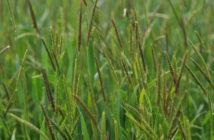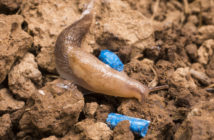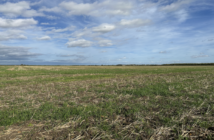‘Broadacre’ weed control methods, which are increasingly replacing FAR approaches, mean sugar beet weeds can be kept in check through the early part of the season despite the loss of desmedipham. As well as effective weed control, the strategy can also help to ease spraying programme pressures on beet-growing farms facing increased workload challenges after raising their areas of spring-drilled combinable crops as a grassweed control measure.
That’s the view of crop protection company FMC, which suggests that under the broadacre approach growers can achieve similar levels of weed suppression from fewer spraying hours – provided best application advice is followed.
“Just four tall weeds per square metre can reduce beet yields by 1.0t/ha,” says Georgia Antoniou, former East Anglian agronomist and now FMC commercial technical manager.
“Patchy beet emergence and delayed weed flushes due to dry conditions meant that last spring, the first since the withdrawal of desmedipham, challenged weed control programmes, creating difficult conditions which were then compounded by the weather turning wet, resulting in weedy beet at variable growth stages.
“An efficient strategy and a tactical approach to weed control are required in such situations to help plan herbicide decisions and sprayer routines. Using the FMC broad acre system, based around a foundation of Safari Lite (lenacil + triflusulfuron-methyl), growers gain from greater timing flexibility plus cost savings in both application and management time. A programme including Safari Lite and designed around just two applications can free up the sprayer for use in other crops, vital at a busy time.”
Georgia’s view is supported by agronomists such as Agrovista’s Becky Finbow, who points out that recent years have underlined the value of a good pre-emergence herbicide on a moist seedbed as a basis for weed control programmes.
“Warm, dry conditions like those in spring 2020 create a tricky situation where the warmth produces rapid weed growth but lack of moisture reduces residual herbicide efficacy,” she says.
“But wetter, cold weather brings different challenges. Although weeds are more controllable with residual chemistry performing better in moist conditions, there’s the challenge of finding a spray window, and the safety of young plants to consider, so even when a window can be found, weeds may be larger and so harder to control with a FAR approach.
“We’ve seen the importance of tackling weeds when small, especially with species such as knotgrass. Since the loss of desmedipham the importance of adjuvants in maximising efficacy from the chemistry remaining has also been underlined.”
With the increase in spring cropping and the added complication of losing active ingredients, spring workloads have increased and while desmedipham provided the flexibility of early weed control in cooler conditions, more vigilance in checking the efficacy of applications is now necessary.
“Beyond the issue of compromised efficacy if intervals are stretched, one of the problems with a FAR approach is that most growers cannot dedicate a sprayer to beet and don’t have time for the wash-out regime required from the multiple applications required under FAR.
“Robust, larger mixes used in the broadacre technique perform better on bigger weeds, while fewer passes save time during a busy period, as do fewer tank cleanings, particularly if products such as Debut (trifusulfuron-methyl) or Safari Lite (lenacil + triflusulfuron-methyl) are used. This helps ensure good application timing, with a knock-on bonus for timing of insecticides for virus yellows, or Centurion Max (clethodim) for blackgrass, plus, of course, other crop spraying.
“An understanding of specific field history is needed to make sure tricky weeds such as polygonums and runch don’t slip through the net, but for general weed control Safari Lite provides good control of brassicas and cleavers, complemented by the addition of phenmedipham and ethofumesate as required to expand the weed spectrum.”




